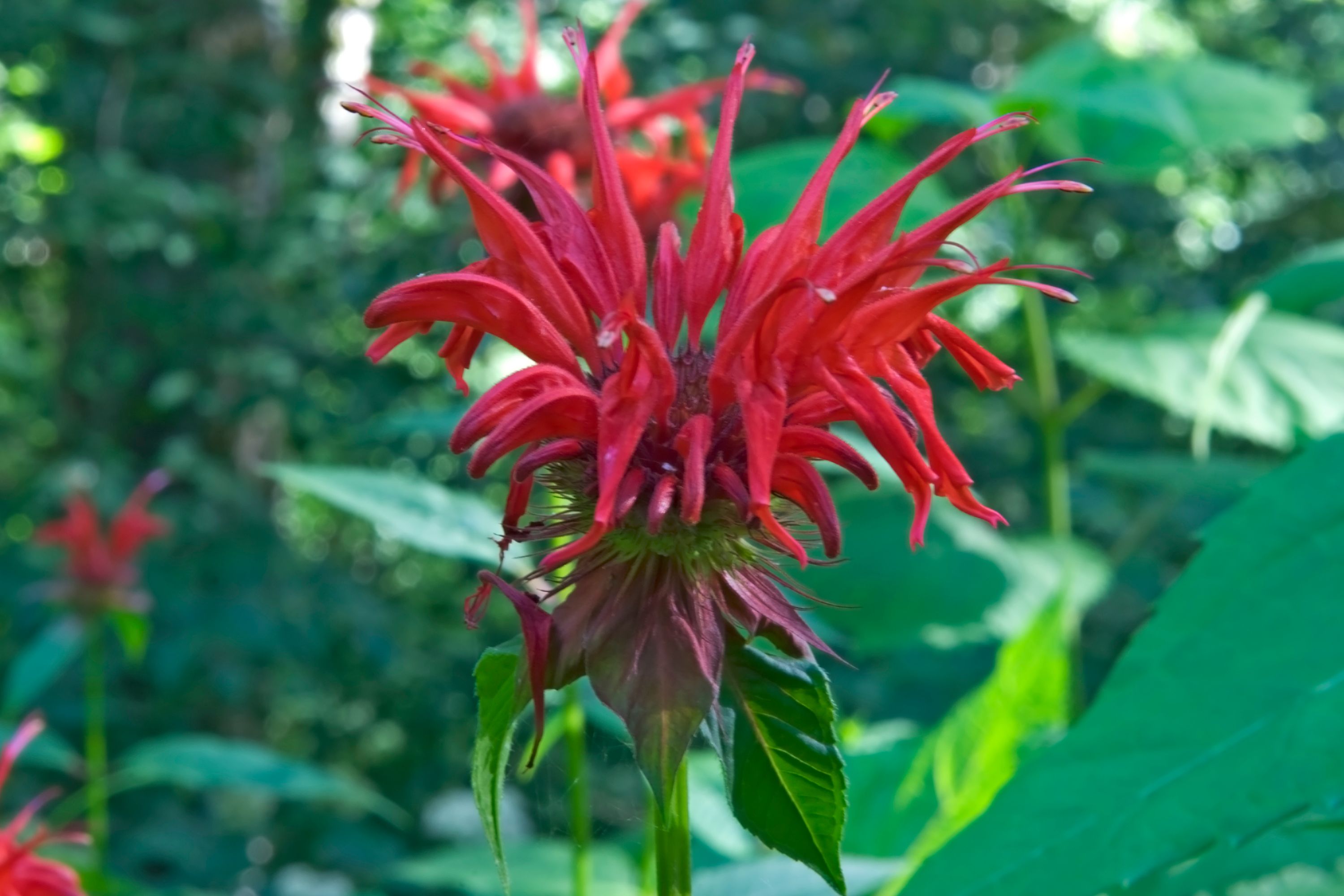Bee Balm
(Monarda didyma)

Description
Monarda didyma, commonly known as Bee Balm or Oswego Tea, is a beautiful and fragrant herbaceous plant that belongs to the mint family (Lamiaceae). This plant is native to eastern North America, where it can be found growing in moist meadows, woodland borders, and along stream banks. Its striking appearance, delightful aroma, and therapeutic properties have made it a popular garden plant. In this article, we will delve into the various aspects of Monarda didyma, including its physical characteristics, cultivation, medicinal and culinary uses, and historical significance. Physical Characteristics Monarda didyma is a clump-forming, herbaceous perennial plant that can grow up to 3-4 feet tall and spread up to 2-3 feet wide. It has square-shaped stems that are hairy and green in color. The leaves of Bee Balm are ovate to lanceolate, 2-4 inches long, and 1-2 inches wide. They are arranged oppositely on the stem and have a serrated margin. The foliage of this plant emits a pleasant aroma when crushed. The flowers of Monarda didyma are what make it so attractive. They bloom in mid to late summer and are produced in dense, globular clusters at the end of the stems. The flower heads are composed of tubular flowers that are 2-3 inches long and range in color from scarlet red to pink and purple. The blooms of Bee Balm are loved by pollinators, especially bees and butterflies. Cultivation Monarda didyma is an easy plant to grow and care for, making it a great choice for beginners. This plant thrives in full sun to partial shade and prefers well-drained, moist soil. It can tolerate a wide range of soil types, from sandy to clay, as long as the soil is not waterlogged. Bee Balm is also tolerant of drought and can survive short periods of dryness. Propagation of Monarda didyma is typically done by seed or division. Seeds should be sown indoors in the spring or directly in the garden after the last frost. Division should be done in the spring or fall when the plant is dormant. Once established, Bee Balm requires little maintenance, other than occasional watering during prolonged dry spells and deadheading to promote more blooms. Medicinal and Culinary Uses Monarda didyma has a long history of medicinal use by Native Americans and early settlers. The leaves and flowers of this plant were used to make a tea that was believed to have therapeutic properties. It was used to treat various ailments, including fever, colds, flu, and digestive issues. Today, Bee Balm is still used for its medicinal properties. The essential oil extracted from this plant is rich in thymol, a natural antiseptic that has been shown to have antimicrobial and anti-inflammatory properties. The oil is used in aromatherapy to treat respiratory conditions and in topical applications to treat skin infections and inflammation. In addition to its medicinal uses, Monarda didyma is also used in culinary applications. The leaves and flowers of this plant have a sweet, spicy flavor that is reminiscent of oregano and mint. They are used fresh or dried in a variety of dishes, including teas, salads, soups, and stews. Bee Balm is also used to flavor meat dishes, such as chicken and lamb, and is an essential ingredient in traditional Native American cuisine. Historical Significance Monarda didyma has a rich history of cultural and historical significance. The plant is named after the Spanish physician, botanist, and herbalist Nicholas Monardes, who lived in the 16th century.
Taxonomic tree:







